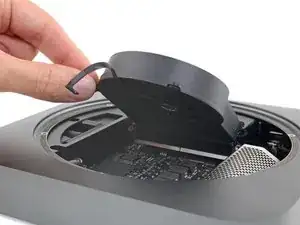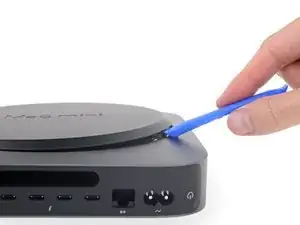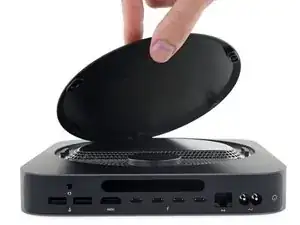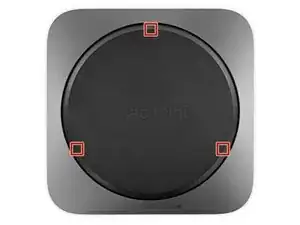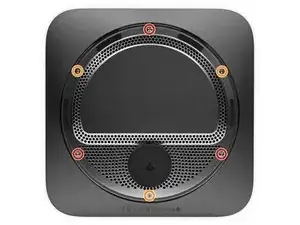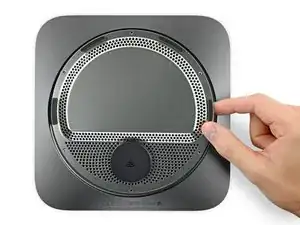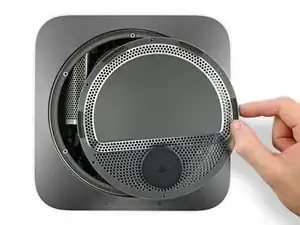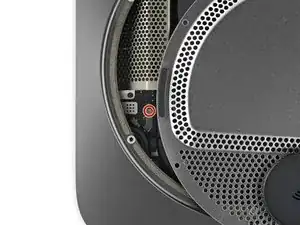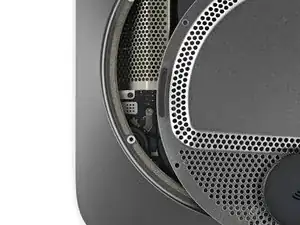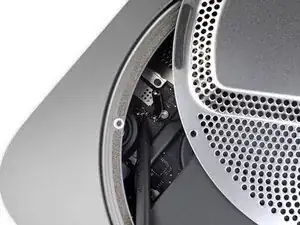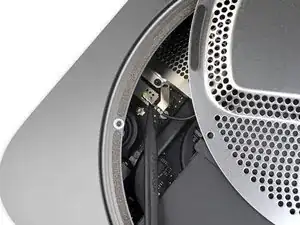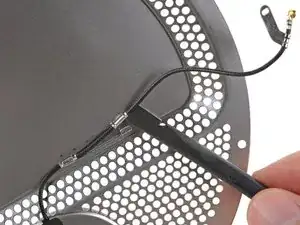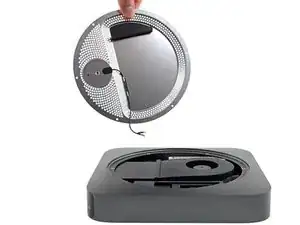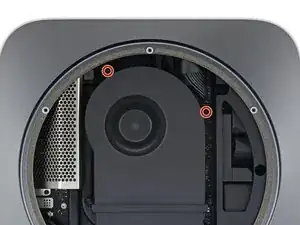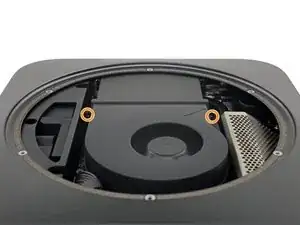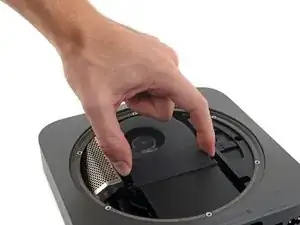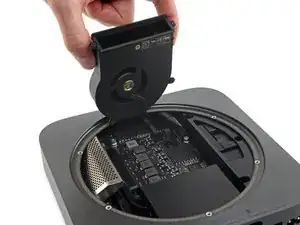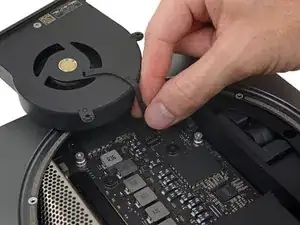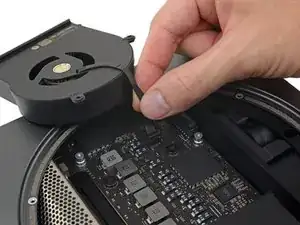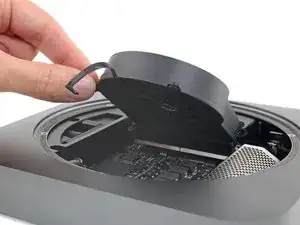Einleitung
Wenn dein Lüfter Geräusche macht, oder mit Staub verstopft ist, dann hilft dir diese Anleitung bei der Reparatur.
Werkzeuge
-
-
Hebe die untere Abdeckung an und entferne sie.
-
Richte sie sorgfältig so aus, dass du die Schrift "Mac mini" lesen kannst, wenn die Anschlüsse zu dir gerichtet sind.
-
Drücke dann von oben auf die Abdeckung, bis die drei versteckten Klammern einrasten.
-
-
-
Entferne sechs Torx TR6 Sicherheitsschrauben, mit denen die Antennenplatte befestigt ist. Sie haben folgende Längen:
-
Drei 4,1 mm Schulterschrauben
-
Drei 1,8 mm Schrauben.
-
-
-
Lege den Mac Mini so, dass die Anschlüsse zu dir zeigen. Hebe dann die Antennenplatte behutsam hoch und schiebe sie etwa 2,5 cm nach rechts.
-
-
-
Entferne die 2,8 mm Torx T6 Schraube, die das Antennenkabel am Logic Board des Mac Mini befestigt.
-
-
-
Heble vorsichtig den Stecker des Antennenkabels mit der Spudgerspitze oder einer feinen Pinzette gerade aus seinem Anschluss auf dem Logic Board hoch.
-
-
-
Entferne die vier 7,2 mm Torx T6 Schrauben, mit denen der Lüfter befestigt ist:
-
Zwei Schrauben, die den Lüfter am Logic Board befestigen.
-
Zwei Schrauben mit Gummischultern, die den Lüfter am Lüfterkanal befestigen.
-
-
-
Hebe den Lüfter an der flachen Kante hoch, dort wo er auf den Abluftkanal trifft. Achte darauf, dass das Kabel darunter nicht zu stark belastet wird.
-
-
-
Fasse das Lüfterkabel an allen sechs Drähten an und hebe es vorsichtig hoch, damit es sich aus seinem Anschluss auf dem Logic Board löst.
-
Vergleiche dein neues Ersatzteil genau mit dem Originalteil. Möglicherweise musst du fehlende Bauteile übertragen oder Schutzfolien abziehen, bevor du es einbauen kannst.
Um dein Gerät wieder zusammenzusetzen, folge den Schritten in umgekehrter Reihenfolge.
Entsorge deinen Elektromüll fachgerecht.
Die Reparatur verlief nicht wie geplant? Schau in unsere Community zur Fehlerbehebung.
2 Kommentare
Hi, thank you for this guide. I am getting ready to do the same. Regarding the fan connector: is it perhaps the slide-in type which can be disconnected by pulling the wires horizontally backwards, instead of pulling upwards? The photos are good but still not enough magnification to be able to tell. Thanks in advance.
It appears to be the type of connector to slide laterally rather than needing to be pulled vertically in order to be disconnected.
Zac Hall -
